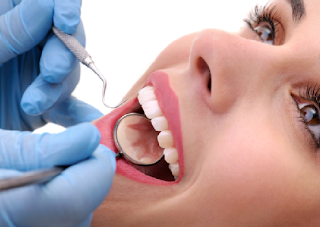What is Anxiety?
Anxiety is a state of persistent and uncontrollable nervousness, stress and worry that is triggered by anticipation of future events, memories of past events or reflections on the events of everyday life, both trivial and significant, with a disproportionate fear of catastrophic consequences.
Stimulated by real or imaginary dangers, anxiety affects people of all ages and social strata. When anxiety presented in unrealistic situations or with unusual intensity, can disrupt daily life. Some researchers believe that anxiety is synonymous with fear, which occur in different degrees and in situations in which people feel threatened by some danger. Others describe anxiety as an unpleasant emotion caused by identifiable hazards or dangers that, in fact, not a threat. Unlike fear, which is caused by actual or known dangers, anxiety may be more difficult to identify and alleviate.
Anxiety disorders are the most common mental disorders in developed countries. These disorders are a serious problem for society because of its interference with work, school and family life. They also contribute to the high rates of alcohol and drug abuse. Anxiety disorders are an additional problem for health professionals because the physical symptoms of anxiety often lead people to primary care physicians or emergency.
Types of Anxiety
According to the Diagnostic and Statistical Manual of Mental Disorders American Psychiatric Association (DSM-IV) are recognized twelve kinds of anxiety disorders in the adult population. They can be grouped into seven categories:
Panic disorder with or without agoraphobia: The main feature is the occurrence of panic attacks, with the fear of recurrence. In clinical settings, agoraphobia is a condition that usually appears by itself, but it is typically associated with some sort of panic disorder. Patients with agoraphobia are afraid of places or situations where you might have a panic attack and are unable to leave or to seek help. About 25% of patients with panic disorder develop obsessive-compulsive
Phobias: These include specific phobias and social phobia. A phobia is an intense, irrational fear of a specific object or situation that the patient tries to avoid. Some phobias are about activities or objects that involve some risk (e.g. flying or driving), but many are focused on harmless animals and other objects. Social phobia is a fear of being humiliated, judged or analyzed. It manifests as a fear of performing certain functions in the presence of others, such public speaking or using a public restroom
Obsessive-compulsive disorder is characterized by persistent intrusive thoughts have no unwanted or repetitive behaviors that reflect the patient's anxiety or attempts to control. It affects 2-3% of the population and is more common than thought
Stress Disorders: These are stress disorder and post-traumatic stress disorder acute. Stress disorders are symptomatic reactions to traumatic events in the patient's life
Generalized anxiety disorder: anxiety disorder is most commonly diagnosed cancer and is more common in young adults
Anxiety disorder known physical causes: For example, general medical conditions or substance abuse
Anxiety Disorder Not Otherwise Specified: This final category is a separate type of disorder, but is included to cover the symptoms that do not meet the specific criteria of the DSM-IV anxiety disorders.
All diagnoses of anxiety disorders in DSM-IV criteria include gravity. Anxiety must be severe enough to significantly interfere with work performance or educational or social activities and relationships patient's usual activities.
Anxiety disorders vary widely in frequency, age of onset, family patterns and gender. Stress disorders and anxiety disorders caused by medical conditions or substance abuse are less specific for age and gender. While OCD affects men and women equally, generalized anxiety disorder, panic disorder and specific phobias affect women more often than men. Generalized anxiety disorder and panic disorder are more likely to occur in young adults, while phobias and obsessive-compulsive disorder may begin in childhood.
Symptoms of Anxiety
Emotional and behavioral symptoms of anxiety disorders are stress, self-awareness, new or recurrent fears (such as fear of the dark, of being alone or strangers), doubt and questioning, crying and whining, concerns, constant need for security, distraction, decreased appetite or other changes in eating habits, inability to control emotions, feeling like you're about to have a heart attack, dying, or going crazy, nightmares, irritability, stubbornness, anger, regression to behaviors typical of earlier stages of development and the lack of willingness to participate in family and school activities.
Physical symptoms include: rapid heartbeat, sweating, tremor, muscle aches tension, dry mouth, headache, upset stomach, diarrhea, constipation, frequent urination, bed wetting (new or recurrent), stuttering, hot flashes or chills, throat constriction (lump in the throat), disturbed sleep and fatigue. Many of these symptoms of anxiety are very similar to those of depression and up to 50% of children also anxious depression.
In general, physiological hyper arousal (excitation shortness of breath, fight or flight reaction) characterizes anxiety disorders, whereas hypo activation (lack of pleasure and guilt) characterizes depression. Other signs of anxiety problems are poor school performance, loss of interest in activities once enjoyed, the obsession with appearance or weight, social phobias (eg, fear of walking into a room full of people) and the imaginary fears persisting for more than 6-8 years. Children with anxiety disorders tend to be perfectionists and are concerned about "doing things right", but rarely feel their work is satisfactory.
Shyness is not necessarily indicative of a disorder unless they interfere with normal activities and presents with other symptoms. A small proportion of children suffering from social anxiety, a debilitating shyness that persists for months or more, they should be treated. Similarly, anxiety before participating in sports, academics or theater does not indicate a disorder unless they interfere significantly with activity.
The separation anxiety disorder is the most common anxiety disorder in children, affecting 2% -3% of school-age children. Consists of extreme distress and disproportionate to the daily separation from parents or home and unfounded fears of harm to themselves or their loved ones. Approximately 75% -85% of children who refuse to go to school have separation anxiety. The normal separation fears usually disappear within 5-6 years, but the separation anxiety disorder usually begins between 7 and 11 years.
Causes of Anxiety
Genetics, biochemistry, environment, history and psychological profile appear to contribute to the development of anxiety disorders. Most patients with these disorders appear to have a biological predisposition to stress, making them more susceptible to environmental stimuli than the rest of the population.
Diagnoses for Anxiety
The diagnosis of anxiety disorders is complicated by the variety of causes the range of disorders that can include anxiety as a symptom. Many patients suffering from anxiety disorders have characteristics of more or symptoms of a disorder. Patients whose anxiety is a symptom of another mental disorder, such as schizophrenia or major depression are not diagnosed with an anxiety disorder. The first thing a physician usually before a patient is anxious to rule out conditions that are known to cause anxiety and then proceeds to complete patient history and medication in order to rule out side effects of prescription drugs. Most doctors will ask the patient consumes caffeine to see if the patient's eating habits are a factor. The work of the patient and family situation will also be discussed. Equally for common analysis of blood sugar and thyroid function.
There are no laboratory tests that can diagnose anxiety, although the doctor may order tests to discard specific. Although there is a psychiatric examination that can provide a definitive diagnosis of an anxiety disorder, there are several short-answer interviews or symptom inventories that doctors can use to assess the intensity of the patient's anxiety and some of the associated features.
Treatments for Anxiety
In relatively mild anxiety disorders, psychotherapy alone may be sufficient. In general, doctors prefer to use a combination of medication and psychotherapy with anxious patients. Most patients respond best to a combination of treatment methods to either medication or psychotherapy alone. Due to the variety of medications and treatment that are used to treat anxiety disorders, the doctor can not predict in advance what will be the best match for a particular patient. In many cases, the doctor will need to test new drugs or treatments over a period of 6-8 weeks in order to assess their effectiveness. Treatment tests do not necessarily mean that the patient cannot be helped or that the doctor is incompetent.
Although anxiety disorders are not always easy to diagnose, there are several reasons why it is important for patients with severe symptoms of anxiety are assisted. Anxiety does not always go away by itself, but often progress to panic attacks, phobias and depressive episodes. Anxiety disorder untreated can eventually lead to a diagnosis of major depression or interfere with patient education or their ability to hold a job. In addition, many patients with anxiety develop addictions to drugs or alcohol when they try to "medicate" their symptoms. Furthermore, as children learn from their parent’s ways to manage anxiety, adults receiving help for anxiety disorders are in a better position to help their families to manage the factors that lead to anxiety than those who are not treated.










 9:12 PM
9:12 PM
 Jimmy Frenendo
Jimmy Frenendo













.jpg)







